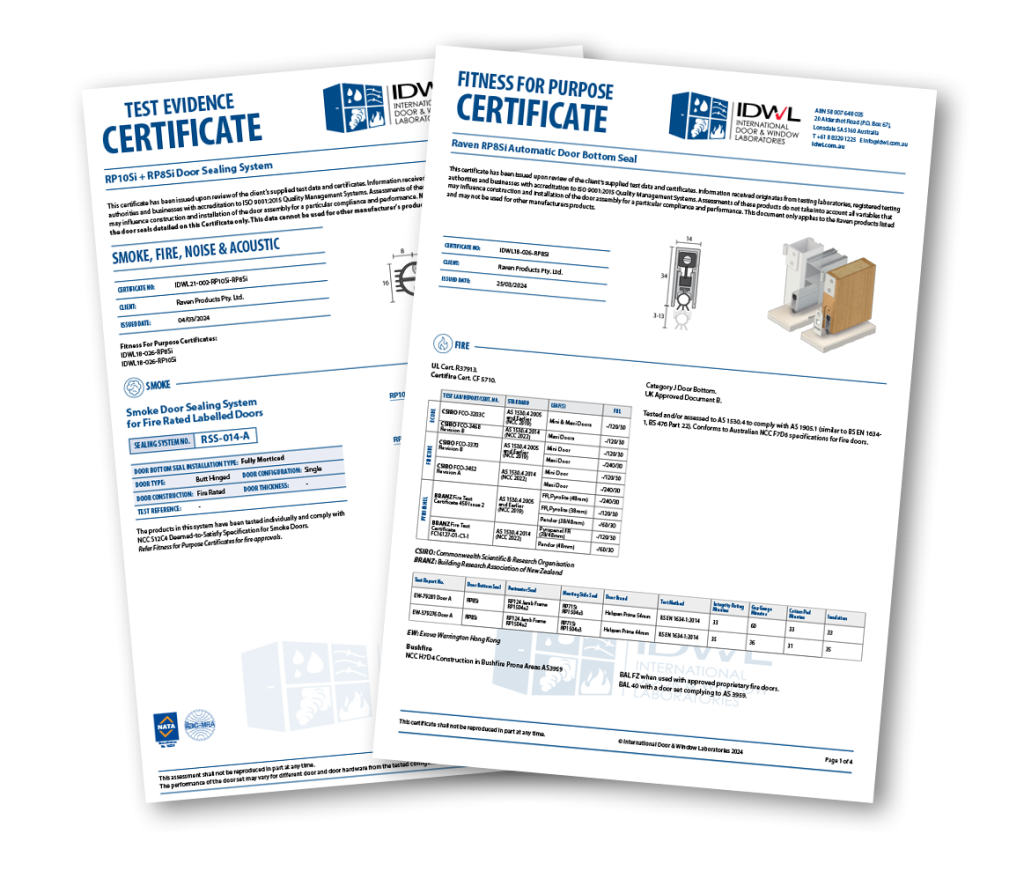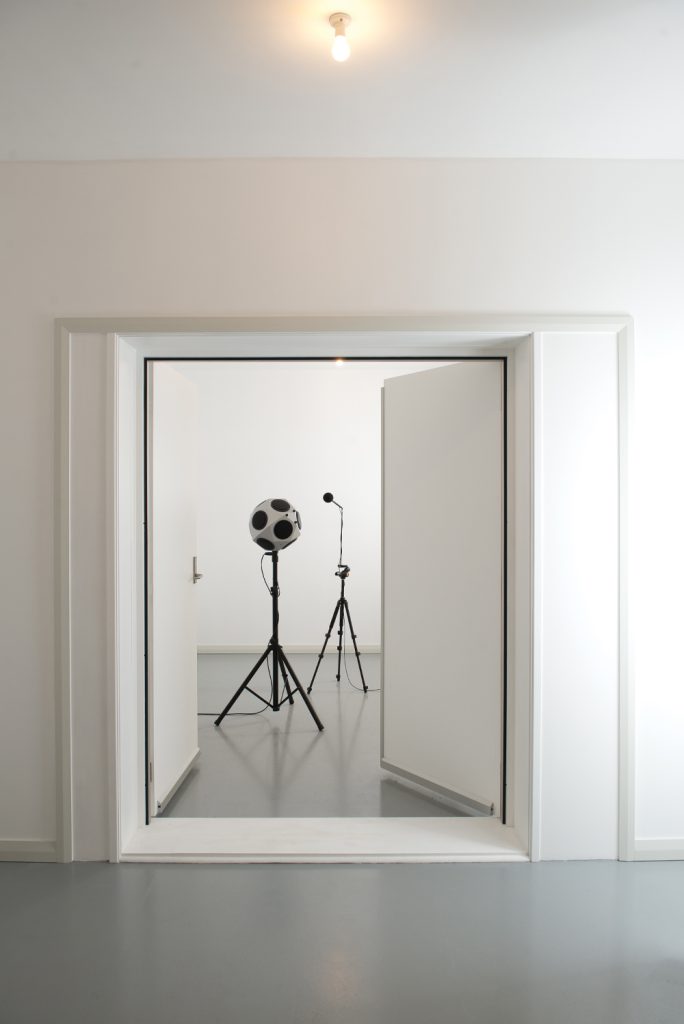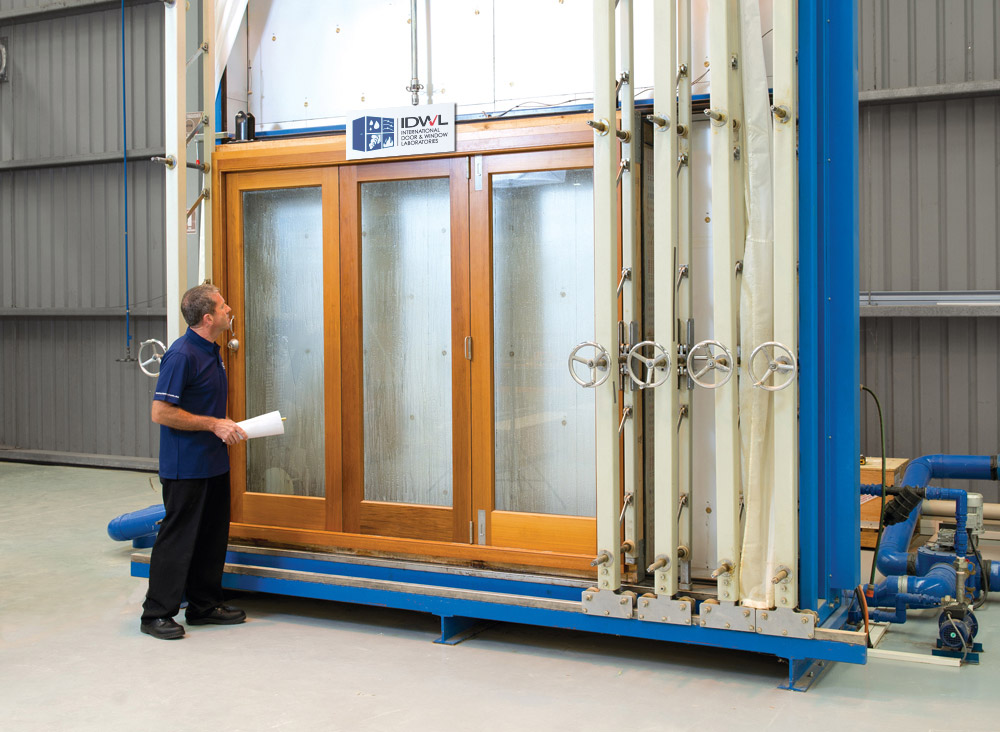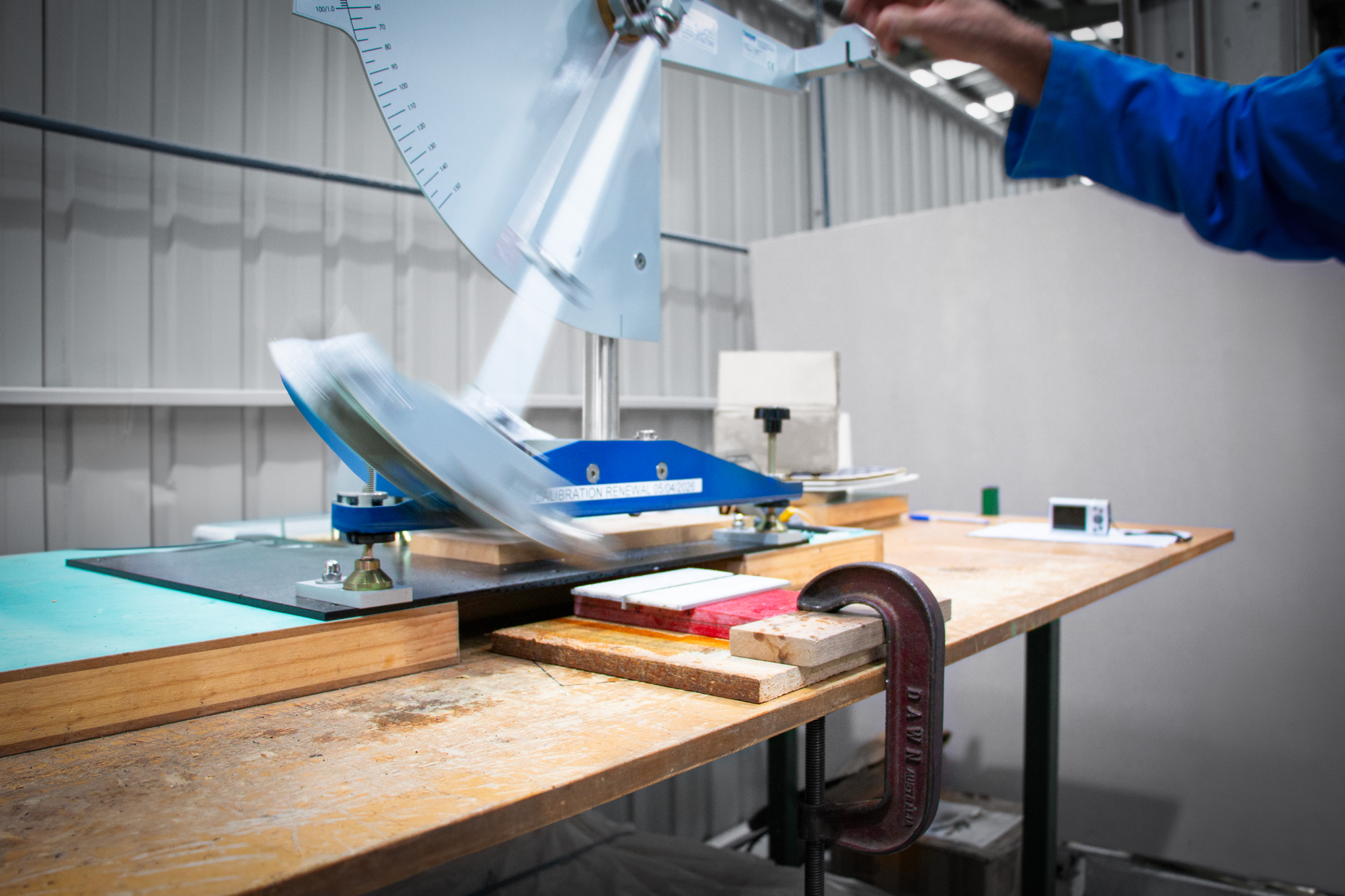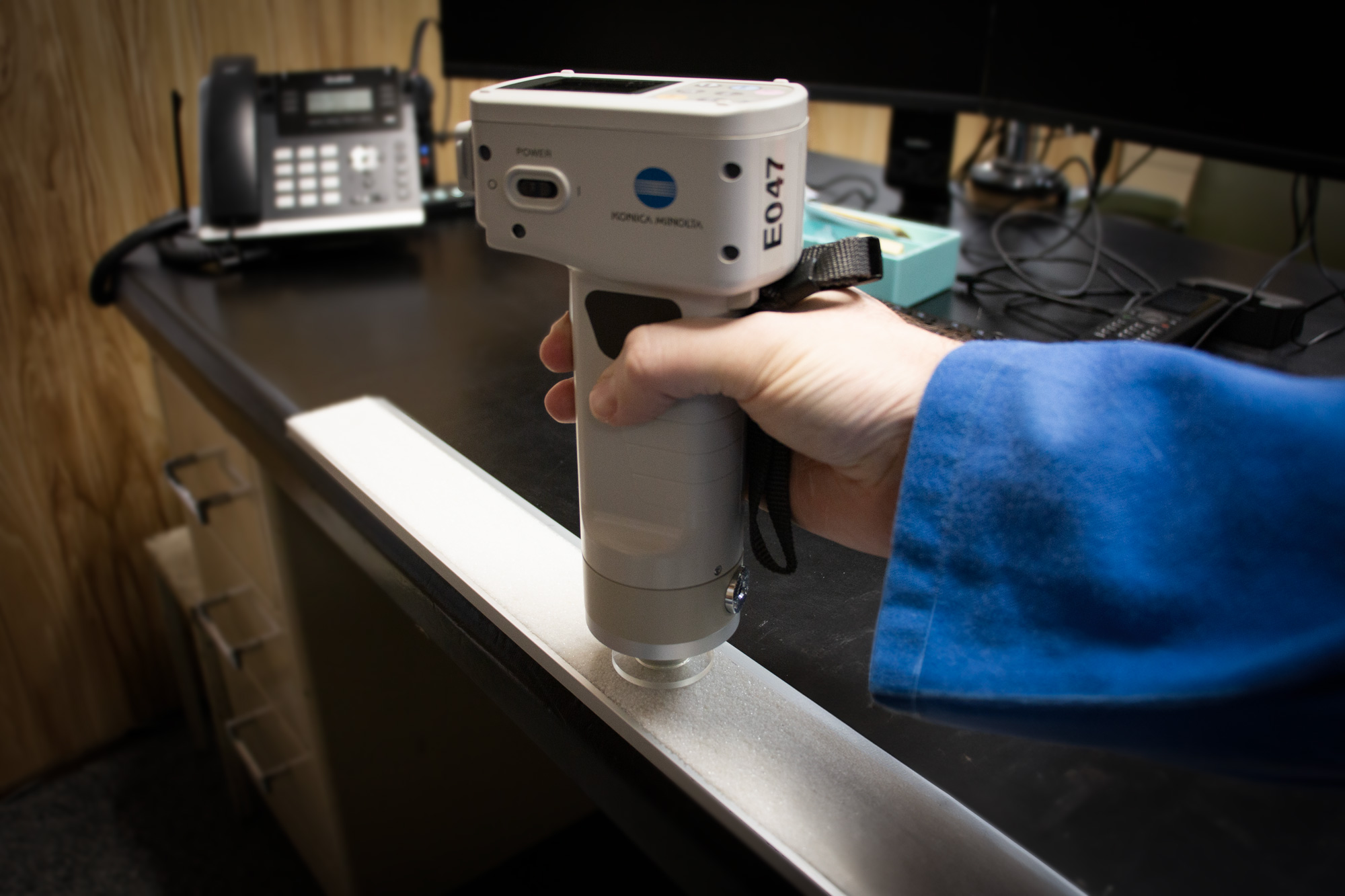About the lab
IDWL’s state-of-the-art acoustic reverberation rooms enable a controlled sound field to be produced in the source room. This sound field penetrates the tested specimen allowing some of the sound field energy to pass to the receiving room. The sound field energy in both rooms is measured and the sound transmission loss through the door set is calculated. The sound transmission loss data is compared to reference curves in ISO 717-1 to establish the Rw value of the tested door set.
Acoustic tests for airborne noise to EN ISO 10140-2 Laboratory Measurement of Sound Insulation of Building Elements. Tests are rated to ISO 717-1 to give a weighted “Rw” rating in decibels. This and other weighted ratings are a requirement of the NCC in many buildings and in building codes throughout the world.
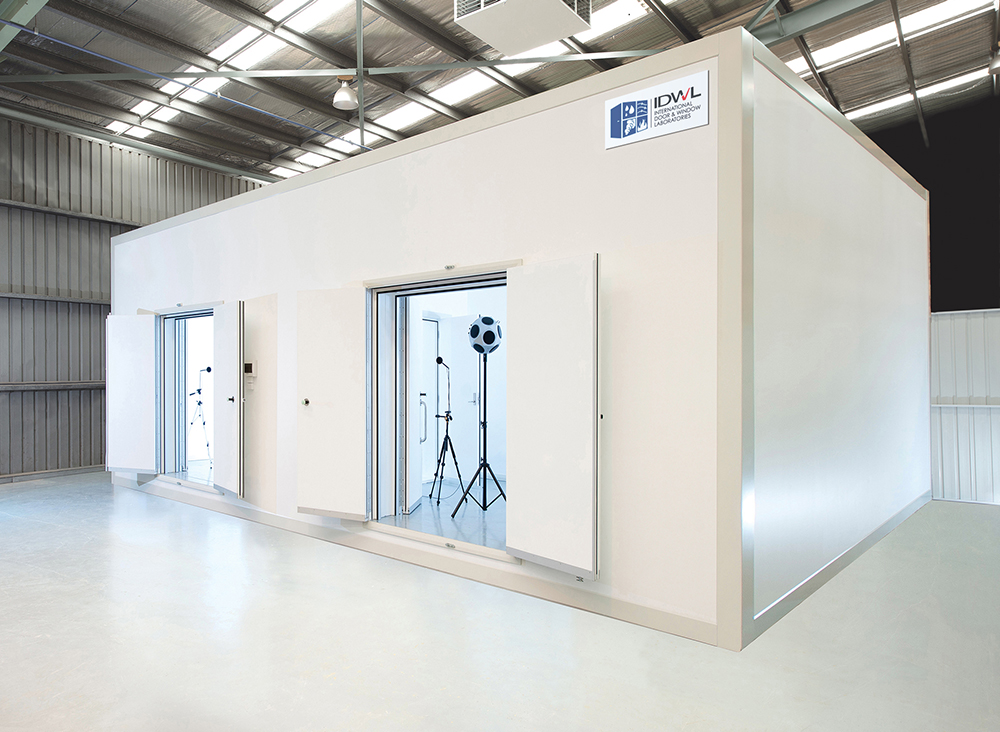
Acoustic tests are conducted to the following standard
- EN ISO 10140-2 Laboratory Measurement of Sound Insulation of Building Elements.
This document specifies a laboratory method for measuring the airborne sound insulation of building products, such as walls, floors, doors, windows, shutters, façade elements, façades, glazing, small technical elements, for instance transfer air devices, airing panels (ventilation panels), outdoor air intakes, electrical raceways, transit sealing systems and combinations, for example walls or floors with linings, suspended ceilings or floating floors.
The test results can be used to compare the sound insulation properties of building elements, classify elements according to their sound insulation capabilities, help design building products which require certain acoustic properties and estimate the in-situ performance in complete buildings.
The measurements are performed in laboratory test facilities in which sound transmission via flanking paths is suppressed. The results of measurements made in accordance with this document are not applicable directly to the field situation without accounting for other factors affecting sound insulation, such as flanking transmission, boundary conditions and total loss factor.
